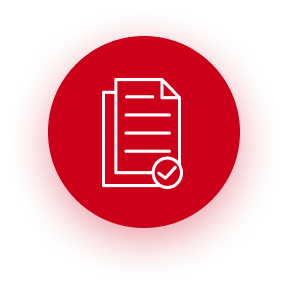online Payroll Perfection, Just a Keystroke Away
Trusted by 17,000+ companies & 600,000+ Employees.
Existing User? Sign In
Trusted by 17,000+ companies & 600,000+ Employees.
Existing User? Sign In

Monitor every modification to your payroll data using Kredily's Audit Log. Ensure transparency, security, and compliance by effortlessly tracking and reviewing all payroll actions.

Streamline your statutory compliance through Kredily's PF ESI challan generation. Seamlessly create precise challans for PF and ESI contributions, ensuring effortless compliance with legal obligations.

Provide your employees with the capability to plan their finances effectively using Kredily's Income Tax Projections feature. Offer customized projections to assist them in better planning, optimizing taxes, and reaching financial objectives effortlessly.
Whether you are the owner of a large corporation or a small business, you must have contemplated the advantages of employing an online payroll service for your organization. Determining whether investing in a payroll process upgrade will be advantageous involves several considerations before reaching a final verdict. For many small and medium-sized enterprises, managing their finances and accounting independently has become a routine, and they may be hesitant to transition to an online payroll software, relinquishing their manual procedures. For most small and medium-sized businesses, handling their
finances and accounting on their own has become part of the routine, and they are hesitant to switch to an online payroll software and abandon their manual processes.
Online payroll refers to a cloud-based or web-based system that allows businesses to process and manage their payroll tasks over the internet. Instead of using traditional on-premises payroll software, online payroll relies on internet connectivity to access and store employee payroll data securely in the cloud.
Key features of online payroll systems typically include:
Employee Data Management: Storing and updating employee information such as names, addresses, tax details, and banking information.
Payroll Processing: Calculating and generating employee salaries, wages, deductions, and tax withholdings based on predefined rules and regulations.
Direct Deposit: Facilitating direct deposit of employees’ salaries into their bank accounts.
Tax Compliance: Automatically calculating and filing payroll taxes, including deductions for income tax, Social Security, and Medicare.
Reports and Analytics: Generating various payroll reports and analytics to monitor labor costs, tax liabilities, and other payroll-related metrics.
Employee Self-Service: Allowing employees to access their payroll information, view pay stubs, and manage their personal details.
Integration with HR and Accounting: Seamless integration with human resource management and accounting systems for efficient data transfer and consistency.
Compliance and Security: Ensuring compliance with payroll regulations and maintaining data security to protect sensitive employee information.
Online payroll offers several advantages, including accessibility from anywhere with an internet connection, automatic updates, scalability, reduced manual work, and enhanced data security. Many businesses opt for online payroll solutions to streamline their payroll processes and reduce administrative burdens, enabling them to focus on core business operations.
Online payroll data is stored in the cloud. Cloud storage involves storing data on remote servers hosted by third-party providers. Payroll service providers maintain secure data centers with encrypted storage to safeguard sensitive information. These servers offer redundancy, backups, and robust security measures to protect against data loss and unauthorized access. Access to the data is controlled and restricted to authorized personnel only. Cloud storage allows businesses to access and manage payroll data from anywhere with an internet connection, providing flexibility and scalability. It eliminates the need for maintaining physical servers and ensures data availability, security, and compliance with industry standards.
Online payroll works through a cloud-based software system that automates various payroll tasks and processes over the internet. Here’s how online payroll typically works:
Employee Data Entry: HR administrators input and maintain employee data, such as names, addresses, tax information, and salary details, into the online payroll system.
Payroll Processing: Based on the data entered, the system calculates salaries, wages, deductions, and tax withholdings for each employee following the relevant laws and regulations.
Timesheet Management: For organizations tracking hourly employees, the system may integrate with time-tracking software to manage timesheets and calculate hours worked accurately.
Direct Deposit or Payment Generation: The system facilitates direct deposit of salaries into employees’ bank accounts or generates paychecks for manual distribution.
Payroll Taxes and Deductions: Online payroll automatically calculates and withholds payroll taxes, including income tax, Social Security, and Medicare, ensuring compliance with tax regulations.
Employee Self-Service: Employees can access the system to view their pay stubs, update personal information, and request leaves or reimbursements.
Reporting and Analytics: Online payroll generates various reports, such as payroll summaries, tax reports, and year-end statements for financial and regulatory purposes.
Compliance and Filing: The system helps ensure compliance with payroll regulations by generating and filing required payroll tax forms to the appropriate government agencies.
Integration with HR and Accounting: Online payroll systems often integrate with HR management and accounting software to ensure seamless data transfer and consistency across systems.
Security and Data Protection: Online payroll systems employ robust security measures, encryption, and access controls to protect sensitive employee data from unauthorized access or breaches.
By automating payroll tasks, online payroll systems streamline the entire payroll process, reduce manual errors, and free up HR administrators to focus on strategic HR activities. It also improves accuracy, efficiency, and compliance, making it a valuable tool for businesses of all sizes.
The processing of payroll can be handled by various entities depending on the size and structure of the organization:
In-House Payroll Department: Many medium to large organizations have an in-house payroll department or team responsible for processing payroll. This team typically includes HR professionals or dedicated payroll specialists who handle all aspects of payroll, including calculating salaries, taxes, and deductions, and ensuring timely payments to employees.
Third-Party Payroll Service Providers: Some organizations, especially small and medium-sized businesses, outsource their payroll processing to third-party payroll service providers. These providers are specialized companies that offer payroll services, handling all payroll-related tasks on behalf of the organization.
Accounting Firms: In some cases, organizations may rely on their accounting firms to process payroll as part of their financial services. The accounting firm handles payroll calculations and ensures compliance with tax regulations.
Cloud-Based Payroll Software: With the rise of cloud-based payroll software, organizations can process payroll in-house using online payroll systems. These systems automate payroll calculations and help businesses manage the entire payroll process efficiently.
Regardless of who processes the payroll, it is crucial to ensure accuracy, compliance with tax laws, and timely payment to employees to maintain a positive work environment and comply with legal requirements. Organizations should choose a method that best fits their needs, size, and budget